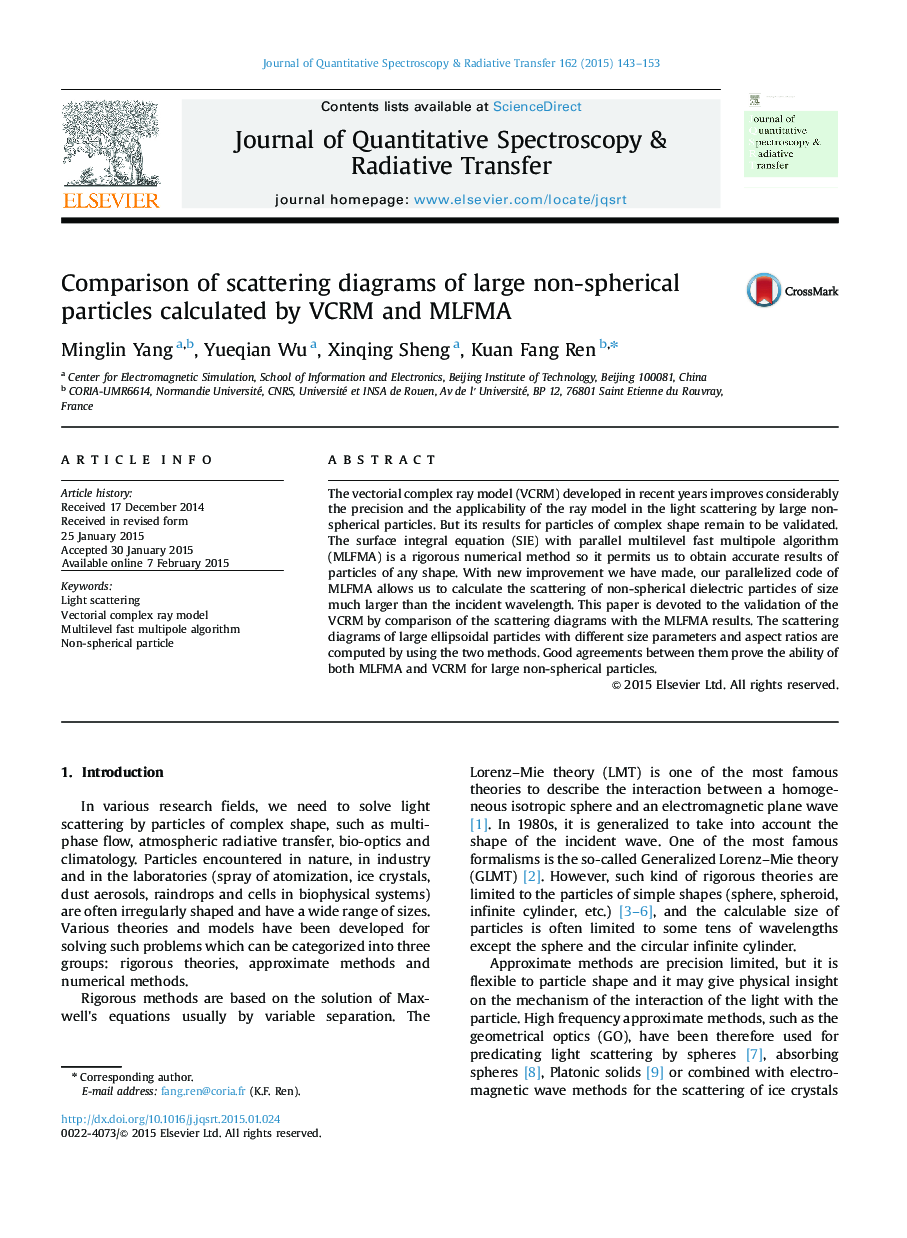| Article ID | Journal | Published Year | Pages | File Type |
|---|---|---|---|---|
| 5427907 | Journal of Quantitative Spectroscopy and Radiative Transfer | 2015 | 11 Pages |
â¢Multilevel fast multipole algorithm is improved for large non-spherical particles.â¢Vectorial complex ray model (VCRM) is validated by the numerical method MLFMA.â¢VCRM can predict with precision the scattering diagrams of non-spherical particles.â¢Larger the particle, better the precision of VCRM, the lower limit is tens of wavelengths.
The vectorial complex ray model (VCRM) developed in recent years improves considerably the precision and the applicability of the ray model in the light scattering by large non-spherical particles. But its results for particles of complex shape remain to be validated. The surface integral equation (SIE) with parallel multilevel fast multipole algorithm (MLFMA) is a rigorous numerical method so it permits us to obtain accurate results of particles of any shape. With new improvement we have made, our parallelized code of MLFMA allows us to calculate the scattering of non-spherical dielectric particles of size much larger than the incident wavelength. This paper is devoted to the validation of the VCRM by comparison of the scattering diagrams with the MLFMA results. The scattering diagrams of large ellipsoidal particles with different size parameters and aspect ratios are computed by using the two methods. Good agreements between them prove the ability of both MLFMA and VCRM for large non-spherical particles.
